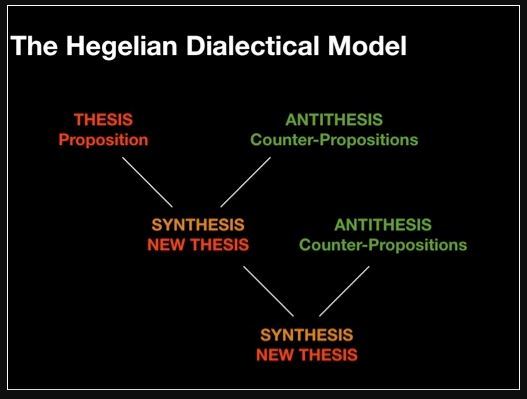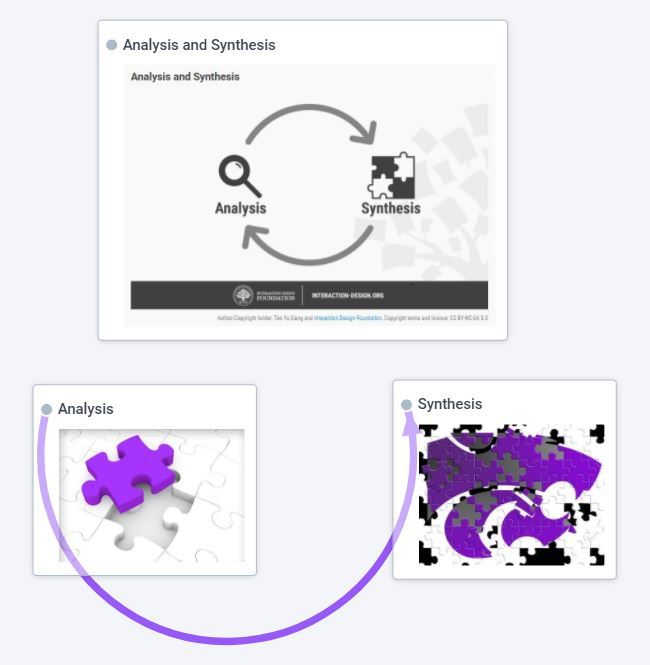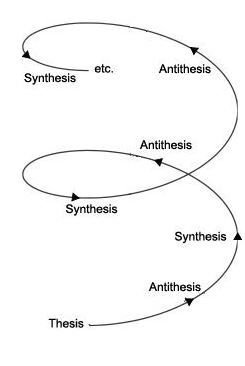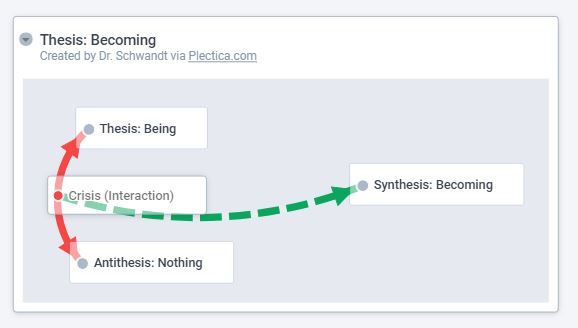Create meaning from contradictory ideas. We can create meaning by determining the factor of the interaction between contradictory ideas. We can do this through what is known as the Dialectic Method. This method was constructed mainly by Karl Marx, yet it heavily built on the ideas of the Hegelian dialectic. In this article, I will explain to you what exactly the Dialectical Method is and how you can apply it in life to be a more creative problem solver.
Creative problem solving: the Dialectical Method
Dialectic implies a process of evolution, where dialectical logic is a system identifying the structure of thought and was initially intended to replace the laws of formal logic. Nevertheless, I do not intend to dive into the history of the Dialectical Method. My intent here is to propose this method as a way to create meaning and create something new in our contemporary chaotic world by examining the three stages of development within the Dialectical Method: All thought is based on pieces of a previous thought:
Before you start diving into any of the stages, you need to first understand the meaning for each stage. Just like anything else, you must understand what each stage is before an understanding of the topic is reached.
Stage #1: Thesis
First, you have your thesis, known also as a proposition. This is the starting point or the status-quo giving rise to the reaction (antithesis).
Stage #2: Antithesis
Second, the antithesis is the reaction or the contradiction. This is the counter-proposition.
Stage #3: Synthesis
Third, the tension between the thesis and antithesis is resolved by synthesis. In other words, this is where meaning is created and where the new thesis comes to be. What’s important to understand here is the meaning of synthesis and how it differs from analysis:
Analysis is an examination of the elements of something (think of breaking something apart or analyzing each individual piece of a puzzle). Synthesis is the combination of ideas to form something new (think of putting the pieces of a puzzle back together, yet you see something completely new).
Want to know the best part of the Dialectical Method? This process is unending. Your synthesis is your new thesis, for which it too will possess a counter-proposition (antithesis).
Watch the following video for a deeper understanding of the Dialectical Method:
Destructive deduction and creative induction
According to John Boyd, famous Air Force Colonel, we are constantly breaking apart old paradigms and putting the pieces back together creating a new perspective better matching our current reality. Essentially, we orient our self to a rapidly changing environment. This ultimately led to Boyd’s creation of the OODA Loop. Check out this article to find out more on the OODA Loop: A Fighter Pilot’s Secret to Surviving Wars: Making Right Decisions Fast Boyd described this through a thought experiment in a presentation called Strategic Game of ? and ?. Through the process of Destructive Deduction (analyze and pull apart mental concepts into discrete parts) and Creative Induction (using these elements to form new mental concepts) we can create a new mental model that more closely aligns with reality. Moreover, Boyd illustrated this thought experiment in an interesting way. Let’s see if you can figure it out. Part 1 of his question: Part 2: Sounds crazy right? Yet, what do you imagine would be created from these parts? The answer: a Snowmobile!
How to apply the Dialectical Method (Step-by-step guide)
Step #1. Identify your thesis
Your Thesis is your starting point or status-quo. This is where your thinking exists today.
Step #2. Identify the antithesis
The Antithesis is the mechanism for change. This is the opposing group or ideas that do not support the status-quo (your Thesis). In order for things to change, we must have some form of opposition. These ideas bring about change by clashing with the Thesis.
Step #3. Synthesis (new thesis)
When a Thesis and Antithesis clash, we get progress. This is a meeting of two groups bringing about a new and better process. However, this process never ends. Let’s examine two examples of this method:
Example #1
Thesis: Being Antithesis: Nothing Synthesis (New Thesis): Becoming
Example #2
Thesis: People need to go to the bank to draw cash. Antithesis: It’s not necessary to go to the bank to draw money. Synthesis (New Thesis): Develop ATM to dispense cash at convenient locations.
The reality behind this method
The dialectical method becomes a continuous and unending mechanism for building on ideas. The truth is: The strongest ideas survive through the continuous dialectical process. This method shows us why we should never get stuck living in our comfortable lives. We should continue to evolve and adapt; continue to challenge our hidden biases and assumptions. After all, Featured photo credit: Pixabay via pixabay.com





